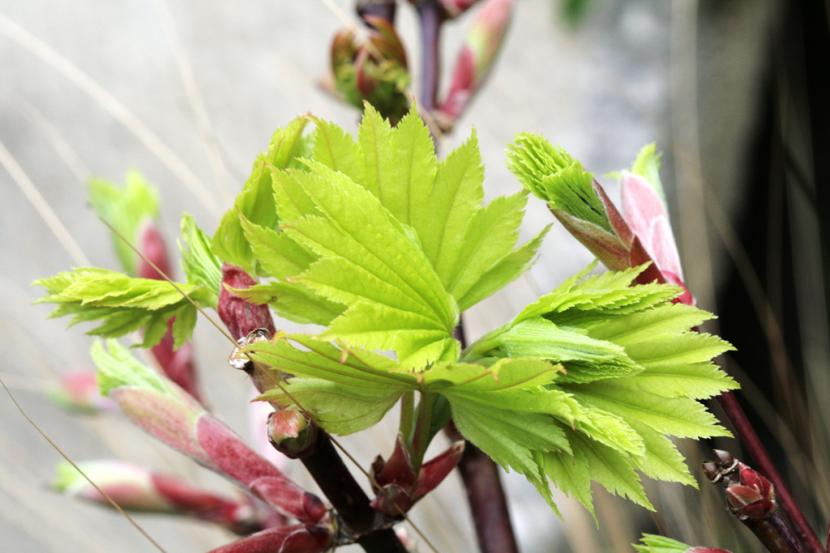We all know the japanese maple, a beautiful tree with palmate leaves which dress up in autumn. But, did you know that there is another oriental species just as decorative? It is somewhat more difficult to find, and also somewhat more demanding. However, worth growing in temperate to cold climates.
Your name? Scientifically it is known for Acer shirasawanum, but in English it has one that you might like more: fullmoon maple, which could be translated as the maple of the full moon.
Features
This is a small tree that can be pruned to keep it as a shrub. Originally from Japan, at the moment, there are only two accepted varieties: the Acer shirasawanum subsp. shirasawanum and Acer shirasawanum subsp. tenuifolium. Cultivating Acer shirasawanum »Aureum» (which you can see in the images in this article) is the one that has begun to be cultivated the most in Europe. It grows to a height of about 4-5m, with a crown diameter of 1 or 2m depending on the pruning done. Its leaves are webbed, light green in spring and summer, and red or pink in fall.
It has a slower growth rate than the rest of the maples that come from the Japanese country, since it does not usually grow more than 10cm / year (the Acer palmatum, if the conditions are appropriate, can grow an average of 50cm / year so that I have been able to verify this same season). It is thus a ideal plant to have in a pot throughout his life decorating, for example, the patio.
Care
As we said, we are facing a more demanding plant than others of its kind. But it is also true that a good substrate will increase its resistance considerably. Still, although there may be very pleasant surprises, it is best to provide you with what you need right from the start, What is it:
- Climate: from warm to cold. An ideal temperature range would be between -5ºC minimum and 30ºC maximum.
- Substratum: if the climate we have is right, it can be grown in a special substrate for acidophilic plants; Otherwise, it is preferable to mix 70% akadama with 30% kyriuzuna so that the roots are always aerated and can thus better absorb the water that will keep the leaves in perfect condition.
- Irrigation: in general, we will water -always with rain water, or acidified by adding a few drops of lemon- about 3 times a week in summer and 1-2 the rest of the year.
- Location: semi-shade, avoiding direct sun.
- Fertilizer: to achieve good growth and development, we will fertilize using a liquid fertilizer for acid plants from spring to late summer.
- Pruning: if we want to prune it, we will either do it in autumn, or when the risk of frost has passed, trimming the branches that have grown too long to keep it compact, »rounded».
El Acer shirasawanum It is a spectacular plant to have both in gardens that have acidic soils, and in pots. Did you know him?



I have a Japanese maple that sprouts cherry and white flowers in the spring. How can I get another tree from this one? I would like to send you a photo to see but I don't know how to hang it here
Japanese maples reproduce by cuttings obtained in the fall, when they no longer have leaves. Cut a branch of about 40cm in length, impregnate its base with rooting hormones and plant it in a pot with a very porous substrate (you can use only perlite or similar) which you will always keep slightly moist. To do this, place the pot in a place where it does not get direct sunlight, and water it 4-5 times a week. Towards the summer, if everything has gone well, you will have a new plant. Good luck 🙂
Thank you
I would like to know what is the secret to caring for ferns ... I have had 4 adantums and they always dry up. How can I take care of it so that it lasts and does not end up drying out. Thanks.
Hello Montse.
The secret is in the substrate. It has to have very good drainage, otherwise the roots will rot. Therefore, it is highly recommended to mix universal growing medium with perlite, and also put clay balls at the bottom of the pot.
If we talk about irrigation, we must irrigate only when the soil is dry, something that can be verified by inserting a thin wooden stick all the way to the bottom: if it comes out practically clean, it can be watered.
A greeting.